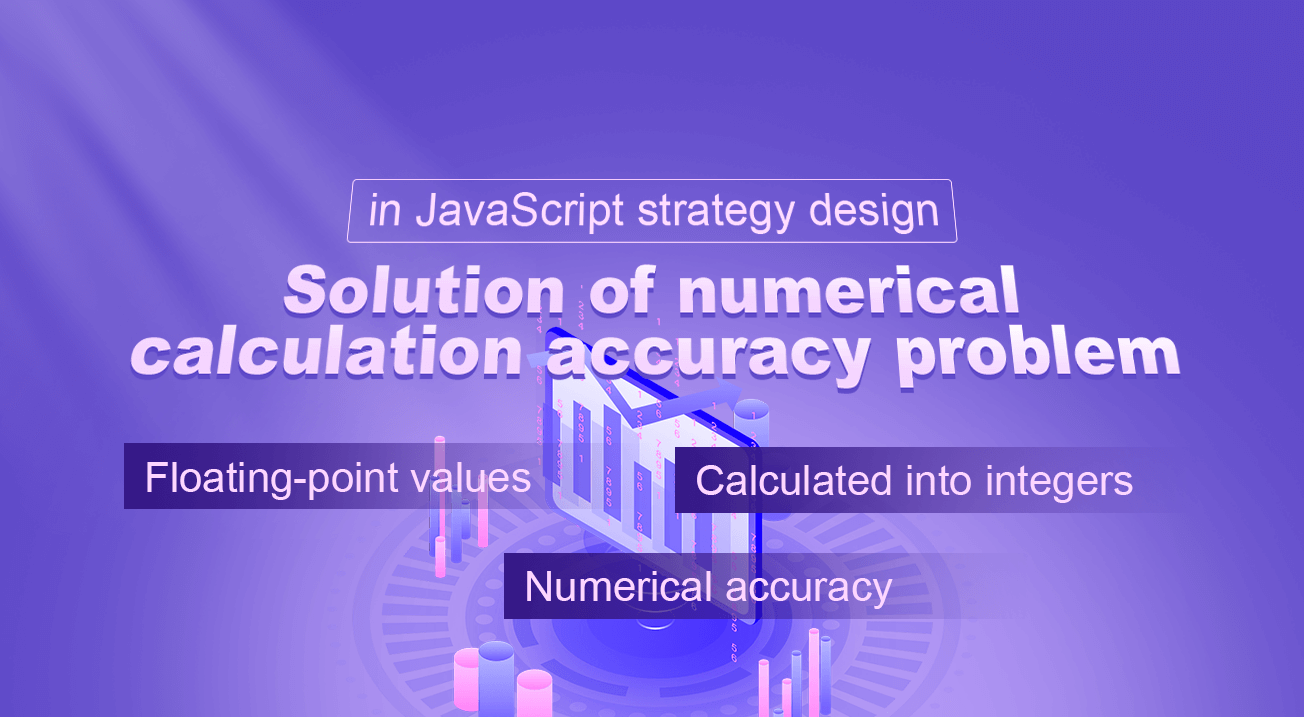Solución del problema de precisión del cálculo numérico en el diseño de estrategias JavaScript
El autor:La bondad, Creado: 2020-07-09 11:31:01, Actualizado: 2023-10-28 15:32:47
Cuando se escriben estrategias de JavaScript, debido a algunos problemas del propio lenguaje de scripting, a menudo conduce a problemas de precisión numérica en los cálculos.1 - 0.8o bien0.33 * 1.1, se calcularán los datos de error:
function main() {
var a = 1 - 0.8
Log(a)
var c = 0.33 * 1.1
Log(c)
}

Entonces, ¿cómo resolver estos problemas?
El progreso máximo de los valores de coma flotante es de 17 decimales, pero la precisión es mucho peor que los enteros al realizar operaciones; los enteros se convierten en decimales al realizar operaciones; y al calcular operaciones decimales en Java y JavaScript, ambos Primero convierte el decimal decimal al binario correspondiente, parte del decimal no se puede convertir completamente a binario, este es el primer error. Después de que los decimales se convierten a binario, luego se realiza la operación entre el binario para obtener el resultado binario. Luego convierte el resultado binario a decimal, donde generalmente ocurre un segundo error.
Para resolver este problema, busqué algunas soluciones en Internet, y probé y usé las siguientes soluciones para resolver este problema:
function mathService() {
// addition
this.add = function(a, b) {
var c, d, e;
try {
c = a.toString().split(".")[1].length; // Get the decimal length of a
} catch (f) {
c = 0;
}
try {
d = b.toString().split(".")[1].length; // Get the decimal length of b
} catch (f) {
d = 0;
}
//Find e first, multiply both a and b by e to convert to integer addition, then divide by e to restore
return e = Math.pow(10, Math.max(c, d)), (this.mul(a, e) + this.mul(b, e)) / e;
}
// multiplication
this.mul = function(a, b) {
var c = 0,
d = a.toString(), // Convert to string
e = b.toString(); // ...
try {
c += d.split(".")[1].length; // c Accumulate the fractional digit length of a
} catch (f) {}
try {
c += e.split(".")[1].length; // c Accumulate the length of decimal places of b
} catch (f) {}
// Convert to integer multiplication, then divide by 10^c, move decimal point, restore, use integer multiplication without losing accuracy
return Number(d.replace(".", "")) * Number(e.replace(".", "")) / Math.pow(10, c);
}
// Subtraction
this.sub = function(a, b) {
var c, d, e;
try {
c = a.toString().split(".")[1].length; // Get the decimal length of a
} catch (f) {
c = 0;
}
try {
d = b.toString().split(".")[1].length; // Get the decimal length of b
} catch (f) {
d = 0;
}
// Same as addition
return e = Math.pow(10, Math.max(c, d)), (this.mul(a, e) - this.mul(b, e)) / e;
}
// Division
this.div = function(a, b) {
var c, d, e = 0,
f = 0;
try {
e = a.toString().split(".")[1].length;
} catch (g) {}
try {
f = b.toString().split(".")[1].length;
} catch (g) {}
// Similarly, convert to integer, after operation, restore
return c = Number(a.toString().replace(".", "")), d = Number(b.toString().replace(".", "")), this.mul(c / d, Math.pow(10, f - e));
}
}
function main() {
var obj = new mathService()
var a = 1 - 0.8
Log(a)
var b = obj.sub(1, 0.8)
Log(b)
var c = 0.33 * 1.1
Log(c)
var d = obj.mul(0.33, 1.1)
Log(d)
}

El principio es convertir los dos operandos a calcular en enteros para calcular para evitar problemas de precisión.
De esta manera, cuando queremos que el programa para colocar un pedido cuando el precio de mercado más una precisión de precio mínimo, no tenemos que preocuparnos por la precisión numérica
function mathService() {
.... // Omitted
}
function main() {
var obj = new mathService()
var depth = exchange.GetDepth()
exchange.Sell(obj.add(depth.Bids[0].Price, 0.0001), depth.Bids[0].Amount, "Buy 1 order:", depth.Bids[0])
}
Los comerciantes interesados pueden leer el código, entender el proceso de cálculo, invitados a hacer preguntas, aprender juntos y progresar juntos.
- Cuantificar el análisis fundamental en el mercado de criptomonedas: ¡Deja que los datos hablen por sí mismos!
- La investigación cuantitativa básica del círculo monetario - ¡No confíes más en los profesores de idiomas, los datos hablan objetivamente!
- Una herramienta esencial en el campo de la transacción cuantitativa - inventor de módulos de exploración de datos cuantitativos
- Dominarlo todo - Introducción a FMZ Nueva versión de la terminal de negociación (con el código fuente de TRB Arbitrage)
- Conozca todo acerca de la nueva versión del terminal de operaciones de FMZ (con código de código de TRB)
- FMZ Quant: Análisis de ejemplos de diseño de requisitos comunes en el mercado de criptomonedas (II)
- Cómo explotar robots de venta sin cerebro con una estrategia de alta frecuencia en 80 líneas de código
- Cuantificación FMZ: Desarrollo de casos de diseño de necesidades comunes en el mercado de criptomonedas (II)
- Cómo utilizar una estrategia de alta frecuencia de 80 líneas de código para explotar y vender robots sin cerebro
- FMZ Quant: Análisis de ejemplos de diseño de requisitos comunes en el mercado de criptomonedas (I)
- Cuantificación FMZ: Desarrollo de casos de diseño de necesidades comunes en el mercado de criptomonedas (1)